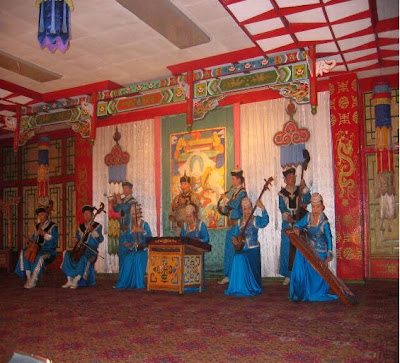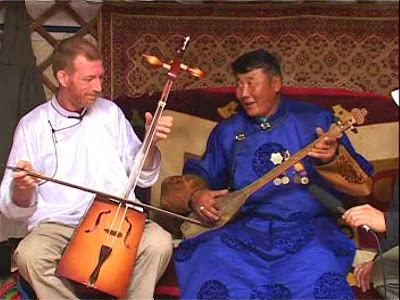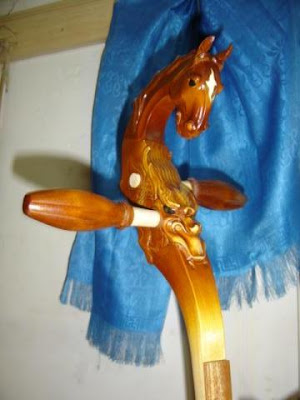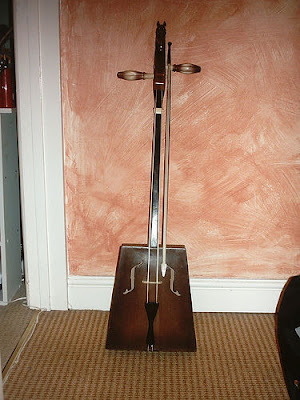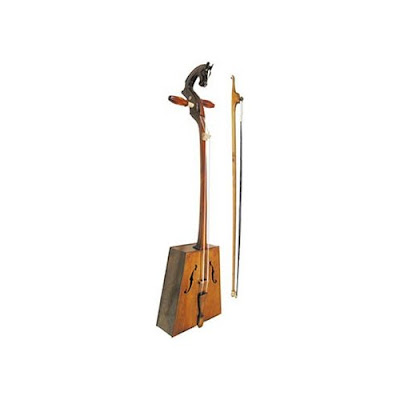The morin khuur is a chordophone of Mongolian origin whose name roughly translates as "horse-head fiddle" in English. It is played with a bow and produces a sound which is poetically described as expansive and unrestrained, like a wild horse neighing, or like a breeze in the grasslands. It is the most important musical instrument of the Mongolian people, and is considered a symbol of the Mongolian nation. The instrument consists of a wooden-framed sound box to which two strings are attached. It is held nearly upright with the sound box in the musician's lap or between the musician's legs. The strings are made from hairs from horses' tails, strung parallel, and run over a wooden bridge on the body up a long neck to the two tuning pegs in the scroll, which is always carved into the form of a horse's head. The bow is loosely strung with horse hair coated with larch or cedarwood resin, and is held from underneath with the right hand.

 The underhand grip enables the hand to tighten the loose hair of the bow, allowing very fine control of the instrument's timbre. The larger of the two strings (the "male" string) has 130 hairs from a stallion's tail, while the "female" string has 105 hairs from a mare's tail. Traditionally, the strings were tuned a fifth apart, though in modern music they are more often tuned a fourth apart. The strings are stopped either by pinching them in the joints of the index and middle fingers, or by pinching them between the nail of the little finger and the pad of the ring finger. Traditionally, the frame would have been covered with camel, goat, or sheep skin, in which case a small opening would be left in back, but in modern times, an all-wood sound box is more common, in a style similar to European stringed instruments, including the carved f-holes. Morin khuur vary in form depending on region. The Instruments from central Mongolia tend to have larger bodies and thus possess more volume than the smaller-bodied instruments of Inner Mongolia. The morin khuur is one of the Masterpieces of the Oral and Intangible Heritage of Humanity identified by UNESCO.
The underhand grip enables the hand to tighten the loose hair of the bow, allowing very fine control of the instrument's timbre. The larger of the two strings (the "male" string) has 130 hairs from a stallion's tail, while the "female" string has 105 hairs from a mare's tail. Traditionally, the strings were tuned a fifth apart, though in modern music they are more often tuned a fourth apart. The strings are stopped either by pinching them in the joints of the index and middle fingers, or by pinching them between the nail of the little finger and the pad of the ring finger. Traditionally, the frame would have been covered with camel, goat, or sheep skin, in which case a small opening would be left in back, but in modern times, an all-wood sound box is more common, in a style similar to European stringed instruments, including the carved f-holes. Morin khuur vary in form depending on region. The Instruments from central Mongolia tend to have larger bodies and thus possess more volume than the smaller-bodied instruments of Inner Mongolia. The morin khuur is one of the Masterpieces of the Oral and Intangible Heritage of Humanity identified by UNESCO. 





